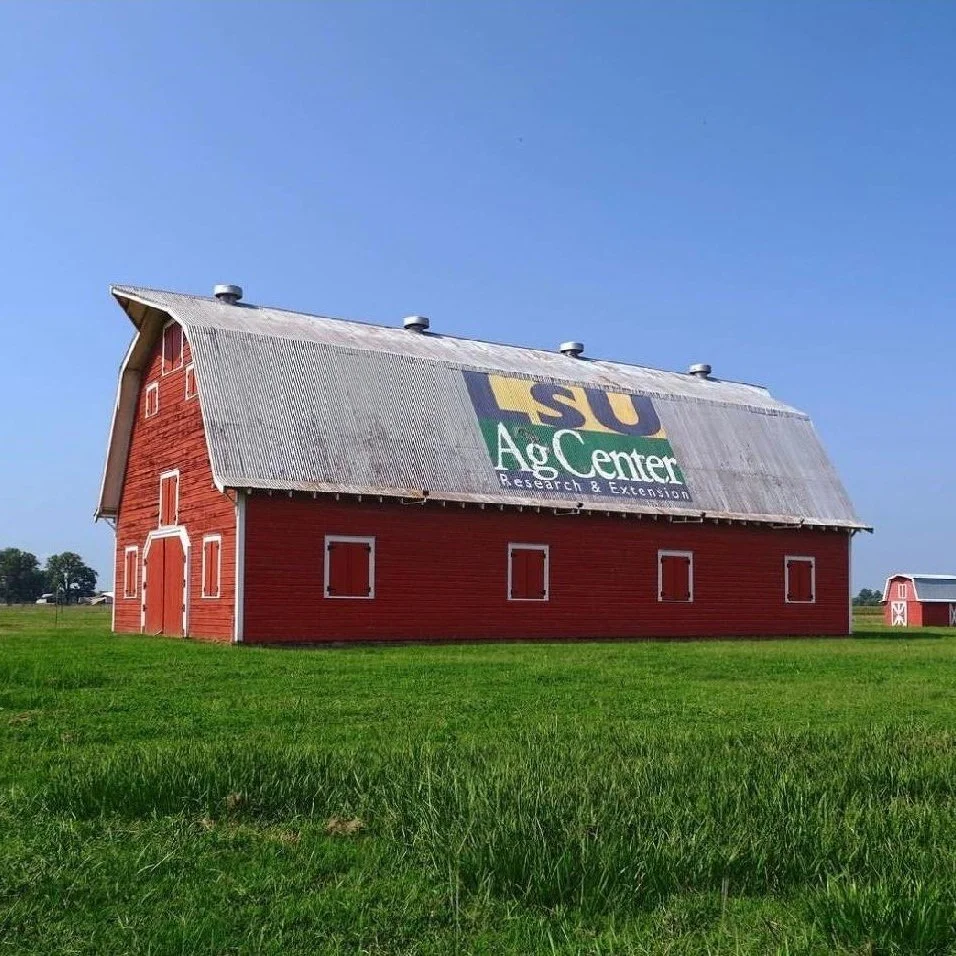Established in 1949, the LSU AgCenter Sweet Potato Research Station in Chase, Louisiana, stands as a testament to over seven decades of dedicated research, innovation and service to the sweet potato industry. Spanning 308 acres, this facility has been at the forefront of advancing the sweet potato industry in the United States, transforming its trajectory from a humble crop into a thriving specialty crop with a diversified market base.
Read MoreThe LSU AgCenter is taking significant steps to address obesity in Louisiana. More than 35% of adults in the state are affected by this condition, according to the Centers for Disease Control and Prevention. New CDC maps show that Louisiana is one of 23 states where adult obesity rates are at or above 35%.
Read MoreThe Seafood Processing Demonstration Lab is inviting people involved in seafood production to attend an open house at the facility on Oct. 22.
The lab is located at the LSU AgCenter Iberia Research Station, and the event will start at 10 a.m. and end at 2 p.m. Lunch and product sampling will be provided. The address is 603 LSU Bridge Road in Jeanerette
Read MoreIn February 2020, Kerry Heafner left his office in West Monroe and drove about an hour northwest to the Union Parish hamlet of Marion to carry out one of his ordinary duties as an LSU AgCenter horticulture agent: giving a talk to a garden club.
Heafner’s visit that day, however, took a turn for the extraordinary when a woman named Lula Shurtleff approached him after his presentation.
Read MoreWhen hurricanes and other natural disasters strike Louisiana, it’s usually not long before elected officials, industry leaders and reporters call the LSU AgCenter seeking expert insight into how widespread and serious the damage is to the state’s agriculture sector.
Read MoreFormer high school agriculture teacher and Louisiana FFA executive secretary Cade LeJeune has been appointed the executive director of Louisiana agricultural education and the Louisiana FFA advisor following a nationwide search.
Read MoreTaking the place of a 40-year veteran of the Louisiana sugarcane industry is no small task, so when LSU AgCenter plant pathologist Andre Gama replaced longtime researcher Jeff Hoy, he knew he had big shoes to fill. Due to his extensive travels, Gama’s own shoes were well worn, so he was up for the challenge.
Read MoreLouisiana experienced extremely dry summer and fall seasons in 2023. According to the National Integrated Drought Information System, the worst drought continued from June to late September in the southern U.S., including Texas, Louisiana and Mississippi. This has put a strain on quality forage production and has impacted the availability of pasture and hay for livestock.
Read MoreSugarcane growers in south Louisiana were making preparations for the upcoming harvest season when Hurricane Francine came ashore last week, bringing winds that knocked their crop over and heavy rains that flooded fields that were already saturated from recent rainfall.
Now, farmers in several parishes of Louisiana’s cane belt are waiting for things to dry out and for the crop to stand itself back up. With a few days of sunny weather in the forecast, they’re optimistic they will soon be back on track.
Read MoreIf your home was damaged by Hurricane Francine, the tremendous work, expense and stress can mean a daunting and difficult ordeal ahead. But if you restore for more than before, you can return to a stronger, more resilient, comfortable and healthy home.
Read MoreMany areas of Louisiana received several consecutive days of rain between August 28 to September 12. The rainy period was capped off with Hurricane Francine on September 11. The continuous precipitation caused weather damage in soybean plants that were mature or near maturity.
Fields planted on or before April 16 at the Dean Lee Research and Extension Center were harvested by August 28 and had good yield and quality. In addition, fields planted on May 6 or later did not show weather damage on September 12.
Read MoreThe 2024/25 U.S. corn outlook calls for smaller supplies and a modest decline in ending stocks. Projected beginning stocks for 2024/25 are 55 million bushels lower based on increases in exports and corn used for ethanol for 2023/24. Corn production for 2024/25 is forecast at 15.2 billion bushels, this estimate is a 39 million bushel increase from last month’s projections. This production increase was the result of a 0.5-bushel increase in yield from previous estimates to 183.6 bushels per acre. Harvested area for grain is unchanged at 82.7 million.
Read MoreIn the aftermath of the storm, the LSU AgCenter LaHouse Research and Education Center is reminding homeowners to prioritize safety and be vigilant when assessing damage and beginning cleanup. With the potential for structural damage and downed powerlines, it’s critical that residents take precautions to avoid further harm.
Read MoreThe LSU AgCenter continues to be a leading resource in crawfish data. Many of you know, LSU and their data sources have been key in all funding opportunities and communications with USDA on any assistance programs we have been able to secure over the past few years. As recently as the ELAP excessive heat calculations of 2023, LSU AgCenter agents and faculty were the leading resource for information on our niche “farm raised fish.” In an effort to continually improve those figures, we are supporting their effort to update key information that is a general resource for the industry and allows their scientists and economists to provide quality anonymous information back to the industry when needed.
Read MoreWith Tropical Storm Francine projected to make landfall as a hurricane in Louisiana later this week, LaHouse Research and Education Center director Carol Friedland is urging homeowners to take proactive measures to safeguard their families and homes from the impending severe weather.
Read More














